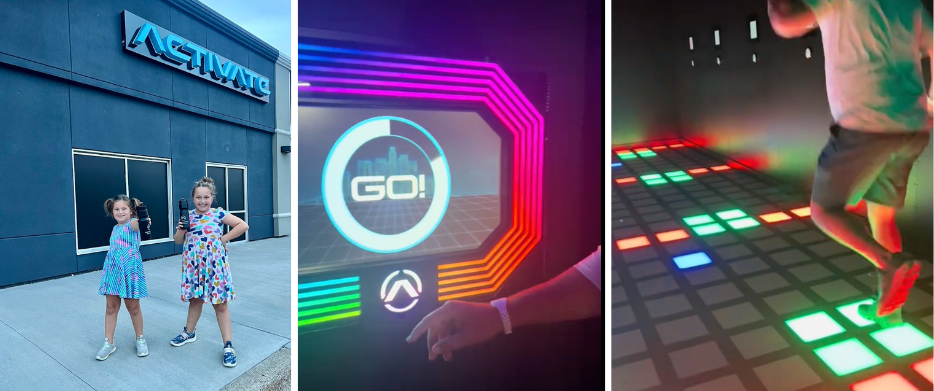Real world is the best way to teach digital citizenship and what is more real than paying bills. Check out...
Real world is the best way to teach digital citizenship and what is more real than paying bills. Check out this article from the Ask a Tech Teacher team on teaching digital ethics via their bills–in this case, family health issues:
Teaching Digital Ethics Through Inclusive Medicaid Survey Simulations
As digital citizenship and real-world simulations grow in popularity across classrooms, educators are looking for more meaningful ways to combine technical learning with civic responsibility. One innovative strategy is teaching students about digital ethics through the design of inclusive health survey simulations, specifically those inspired by Medicaid outreach.
This approach blends digital literacy, ethical data use, and healthcare equity into one dynamic learning experience that connects classroom learning with real-world impact.
Why Health Survey Simulations?
Health surveys are a powerful tool used in public health, yet they often reflect gaps in accessibility, inclusivity, and cultural sensitivity. For students learning to code, build digital interfaces, or work with data, designing mock health surveys introduces them to the challenges of collecting data in a way that respects individuals’ identities, socioeconomic circumstances, and levels of access.
By centering the project around Medicaid outreach, educators can introduce students to the reality that millions of Americans rely on this program and yet many remain unaware they even qualify. Analyzing real-world statistics and community barriers to access gives the simulation more weight and drives home the importance of thoughtful digital design.
Applying Equity to User Experience
Students learning web design or user interface development can explore how equity affects usability. For instance, they might examine how visual layout, language choices, or question framing can create bias. A question as seemingly simple as “Do you have access to a primary care doctor?” might be rephrased for clarity and inclusivity, especially when targeting underserved populations.
Designing surveys that account for cultural nuance, literacy levels, and device accessibility is key to ensuring participation from all groups. Educators can help students explore these ideas by examining efforts to promote diversity and equity in clinical trials, which highlight practical ways to eliminate participation barriers through inclusive design and outreach.
In the classroom, teachers can task students with questions such as:
- How might this survey appear on a phone with limited data or screen size?
- Does the language of the survey include or exclude users with different literacy levels?
- Are there alternative ways to reach the user that don’t rely solely on digital channels?
This critical thinking helps students understand the ethical implications of their digital work and prepares them to be more thoughtful technologists.
Integrating Medicaid Outreach as a Case Study
Incorporating Medicaid outreach into a digital simulation project brings in both practical application and real-world empathy. Students can examine current data around Medicaid enrollment gaps, using these insights to inform how a digital survey might help close those gaps.
Millions are losing Medicaid coverage due to administrative errors, lack of awareness, or the complexities of re-enrollment. Students can study how digital communication, including surveys, text alerts, or eligibility checks, might prevent such issues.
Educators might assign roles to students (researcher, designer, outreach coordinator, etc.) and present them with real-world problems, such as:
- Design a mock digital outreach campaign targeting newly uninsured individuals.
- Create a chatbot that helps users determine Medicaid eligibility.
- Draft a mobile-friendly health survey that minimizes user drop-off.
By placing students in the shoes of designers, policy thinkers, and technologists, this exercise transcends theoretical ethics and gives them tangible tools to build inclusive digital solutions.
Teaching Digital Ethics in Action
Teaching digital ethics is not just about avoiding plagiarism or knowing how to cite sources. It’s also about understanding the responsibility that comes with creating digital tools, especially those that affect public health and underserved communities.
Survey simulations offer a safe but realistic space for students to make mistakes, revise language, and explore different approaches to gathering sensitive data. Teachers can facilitate discussions about what happens when data is misused or collected without proper informed consent. Role-playing different stakeholders allows students to explore diverse perspectives.
Adding reflection exercises, such as journaling about biases they didn’t realize they had or the challenges of writing neutral questions, can deepen the ethical engagement.
Building Tech-Savvy Citizens
Ultimately, this kind of project not only teaches students coding or design but also builds their empathy, critical thinking, and real-world awareness. It prepares them for future careers in tech, healthcare, or policy where digital ethics and equity are becoming increasingly vital.
By merging Medicaid outreach with simulation-based learning, educators give students the tools to think bigger — and more responsibly — about the digital tools they build.
Here’s the sign-up link if the image above doesn’t work:
https://forms.aweber.com/form/07/1910174607.htm
“The content presented in this blog are the result of creative imagination and not intended for use, reproduction, or incorporation into any artificial intelligence training or machine learning systems without prior written consent from the author.”
Jacqui Murray has been teaching K-18 technology for 30 years. She is the editor/author of over a hundred tech ed resources including a K-12 technology curriculum, K-8 keyboard curriculum, K-8 Digital Citizenship curriculum. She is an adjunct professor in tech ed, Master Teacher, freelance journalist on tech ed topics, and author of the tech thrillers, To Hunt a Sub and Twenty-four Days. You can find her resources at Structured Learning.












